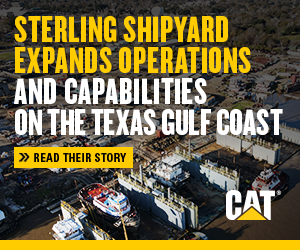Jan de Nul Advances Dredging at Argentina’s Port of Quequén
In November 2015 Jan de Nul ended the fourth phase of a maintenance dredging contract it sealed in December 2014 with one of Argentina’s largest ports the Port of Quequén.
The three-year $24 million project which is expected to expire in 2018 should keep the facility’s depth at 44 feet and was according to an estimate released by the port’s administrator Consorcio de Gestión de Puerto Quequén at the time the contract was signed. Maintenance dredging started on March 2015 and a fifth phase of the project is expected to take place in April this year.
.png|!|)
Argentina’s primary grain port the Quequén facility should boost investments in Argentina one of the largest grain producing regions in the Americas.
“Public and private investors both on a national and international scale are looking at the Port of Quequén as a business opportunity which demands multi-million [dollar] investments in terms of port infrastructure development” said Dr. Arturo Rojas president at the port administrator while commenting on the importance of keeping maintenance dredging at the facility going on.
A number of companies and projects are eyeing the local port as a gateway to their grain exports.
CHS North America’s largest farmer-owned company and a global energy grains and foods business sold recently shares at an export terminal joint venture (JV) it owns in Necochea a province of Buenos Aires to Noble Argentina. The JV is known as Sitio 0 and is owned by a number of South American grain companies including E-Grain A&J Nari Alea y Companía and Lartirigoyen y Companía. The right to use the Port of Quequén for 45 years is one of the reasons these companies partnered to have a piece of the Sitio 0 business.
Earlier this year Crédit Agricole CIB (CACIB) and the Dutch development bank FMO teamed up to provide $32.5 million USt o partially fund a $65 million US green-field grain terminal in the Port of Quequén.
As foreign and South American grain companies look at the opportunities arising for the Port of Quequén the facility’s administration authority reiterated the importance of on-going dredging to keep it operational.
“The successive dredging phases are fundamental to help [the Quequén] port to be predictable in the long-term while improving its nautical and safety conditions and optimizing its operational capacity for potential investors” Rojas said.
Jan de Nul’s 3500-cubic-meter trailing suction hopper dredge (TSHD) La Niña along with water injection dredge DN28 were used to extract 200000 cubic meters of sediments at phase four of the maintenance dredging project the Quequén port administrator authority said.
The La Niña was dedicated to keeping the depths of both the port’s internal and external access channels as well at its forebay depth.
The other vessel DN28 performed among other duties maintenance works at the port’s quays and docking sites at the first 300 meters of the port’s exterior channel as well at its fore-bay and interior channel.
Jan de Nul took over dredging responsibilities assumed by a Brazilian consortium made up of Servimagnus S.A. SDC Do Brasil Servicios Maritimos Ltda. Rowing S.A. and Servidragas S.A. who were tasked with maintaining the port’s depth in 2013.
Prior to that between 2007 and 2012 dredging maintenance was performed by a consortium between Boskalis and Compañia Sudamericana de Dragados.
The port was first dredged to its current depth of 13 meters (43 feet) in 1991 when Boskalis was hired for the expansion.



